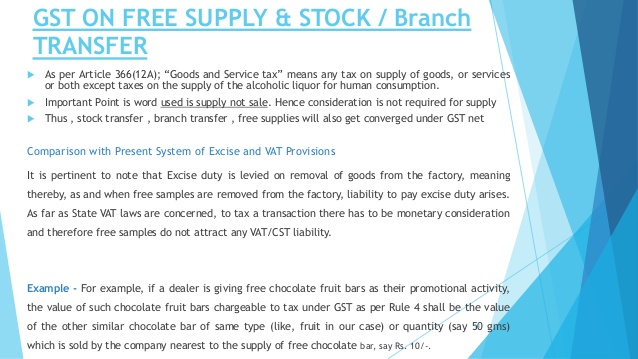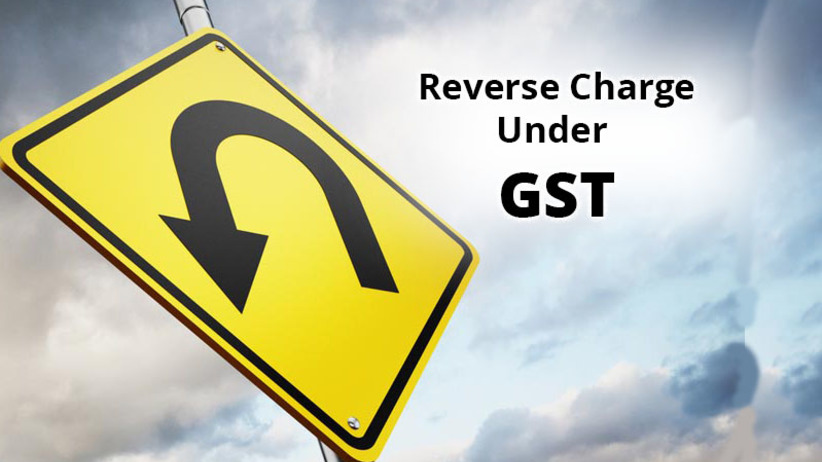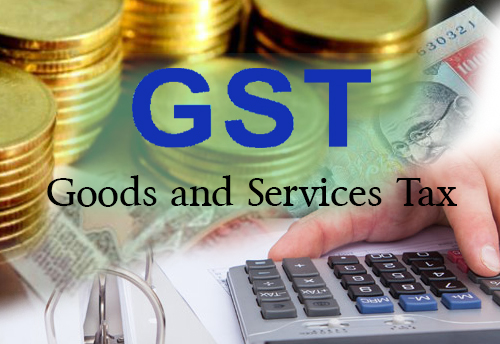Key aspects of Input Tax Credit under Model GST Law

Credit Mechanism for input tax credit under model GST Bill
Here we talk about one of the many aspects i.e. Input Tax Credit (ITC) as a part of the Model GST Law that has been the talk of the town since it was announced. A lot keeps on happening in and around it on a day-to-day basis. It’s huge and covers numerous aspects to be aware of.

Every aspect has a place of importance of its own however the position Input Tax Credit (ITC) holds under Indirect Taxation is crucial since it facilitates the utilisation of tax suffered in previous leg across the supply chain thereby eliminating the tax on tax effect.
Let us have a quick and brief walk through few key elements to be known about Input Tax Credit (ITC):
- Key Terms
‘Input’ means any goods other than capital goods, subject to prescribed exceptions, used or intended to be used by a supplier for making an outward supply in the course or furtherance of business.
‘Input Service’ means any service, subject to prescribed exceptions used or intended to be used by a supplier for making an outward supply in the course or furtherance of business;
‘Input tax’ in relation to a taxable person, means the {IGST and CGST}/{IGST and SGST} charged on supply of goods and/or services to him which are used or intended to be used in the course or furtherance of his business and includes the tax payable on reverse charge basis.
‘Input tax credit’ means the credit of Input tax.
‘Electronic credit ledger’ means the Input Tax Credit ledger in electronic form maintained at the common portal for each registered taxable person in the prescribed manner.
‘Electronic cash ledger’ means the cash ledger in electronic form maintained at the common portal for each registered taxable person in the prescribed manner
2. Conditions for taking Input Tax Credit (ITC)
The admissible credit of Input Tax can be availed by each and every registered taxable person subject to the prescribed time and manner.
The Process of taking Input Tax Credit under GST, its conditions and time lines explained here
The conditions prescribed are as below:
- Registration as a Taxable Person
- Use of Goods and Services for business purpose
- Credit shall be admissible only for effecting taxable supplies and zero rated supplies (exports)
- In case there is a change in the constitution of registered taxable person on account of sale, merger or transfer of business with specific provision of transfer of liabilities then the transfer of unutilised ITC will be allowed in a prescribed manner
- Credit shall be taken asself-assessed in returnand shall be credited on a provisional basis to the Electronic Credit Ledger (ECL) of the taxable person
- All the supporting documents like tax invoice, debit note, supplementary invoice or others should accompany ITC, as issued by supplier
- The goods or services must have been actually received
- The Input Tax should have been actually paid either through electronic cash ledger or credit ledger
- Furnishing of return under Section 27 is a must, by the taxable person
- In case, the goods are received in lots then ITC will only be allowed upon receipt of the final lot
3. Under Section 16(9), ITC is not available in the enlisted cases:
- Goods/services primarily used for personal use or consumption of employee
- Goods/services acquired for execution of works contract when such contract results into immovable property (except plant & machinery)
- Goods/services on which tax has been paid on composition scheme
- Goods/services utilized in construction of immovable property (except plant & machinery), property in which is not transferred
- Goods/services utilized for private or personal consumption
- Credit not admissible on such tax component of the cost of capital goods for which depreciation has already been claimed under the Income Tax Act, 1961
4. Time Limits U/S 16
The admissible credit of Input Tax can be availed by each and every registered dealer subject to the prescribed process.
For the Input Tax Credit (ITC) in respect of inputs held in stock and inputs contained in semi-finished goods (SFG) or finished goods (FG), credit can be taken as under:
| Case | Entitlement Day to take ITC on inputs on stock, SFG or FG held on the day immediately preceding the date |
| A person who becomes liable to registration, applied and granted registration | from which he becomes liable to pay tax |
| A person who voluntarily takes registration though not liable | of registration |
| A registered taxable person who ceases to pay tax under composition levy scheme | from which he becomes liable to tax normally (u/s 7) |
Furthermore, the above mentioned credit can be availed only within one year from the date of issue of tax invoice relating to supply.
However, in other cases, Input Tax Credit (ITC) cannot be availed against any invoice after filing of valid return under section 27 for the month of September, following the end of the financial year to which such invoice pertains or filing of the annual return, whichever is earlier. As per section 30, the last date for filing of annual return is 31st December following the end of the financial year.
5. Utilization of Input Tax Credit (ITC)
- ITC on account of CGST is to be utilised first and foremost towards payment of CGST and then only the remaining amount towards payment of IGST (ITC of CGST cannot be utilised for payment of SGST)
- ITC on account of SGST will first be utilized towards payment of SGST and the remaining amount towards payment of IGST (ITC of SGST cannot be utilised for payment of CGST)
- IGST is to be utilised primarily towards payment of IGST and later the remaining amount for payment of CGST and finally SGST
6. Input Tax Credit against inputs sent for job work
In accordance with the prescribed conditions, the registered taxable person (principal) shall be entitled to ITC on inputs sent to a job-worker; in case, the respective inputs are received back by him within one hundred and eighty days. For capital goods, this time limit is two years.
The taxable person shall pay an amount equivalent to the ITC availed along with interest, where the inputs or capital goods are not received back within the specified time. However, it may be reclaimed when the inputs or capital goods are received back from the place of business.
7. Reversal/Lapse of ITC
- Proportionate ITC shall be reversed in case goods/services are used for business and non-business purpose
- Credit shall be allowed with respect to taxable supply including zero rates supply
8. ITC on supply of capital goods
Talking about supply of capital goods on which ITC has already been taken, the registered taxable person is liable to pay an amount equal to the ITC taken on the said capital goods post deducting the prescribed percentage points or the tax on the transaction value of such capital goods, whichever is higher.
9. Monitoring through matching mechanism
The matching mechanism ensures that every inward supply furnished by the recipient for a particular tax period shall be matched to the corresponding outward supply furnished by the supplier in their respective returns. This is done to check the accuracy of the claims of ITC moreover the same also needs to be matched with the additional duty of customs paid under section 3 of the Customs Tariff Act, 1975 in respect of goods imported by him.
Once verified i.e. if there is no discrepancy then the same is accepted and communicated to the recipient. On the other hand, in discrepancies, the same is informed to both the parties to make for necessary corrections.
On the whole any excess or shortage or duplication in claim of ITC has to either be adjusted or supported by the relevant documents to arrive at the actual figures and in any case the recipients are communicated about all the discrepancies to be corrected within the prescribed time and manner.
10. Migration i.e. carry forward of CENVAT/VAT credit
Section 143 of the Model GST Law provides for the amount of CENVAT credit carried forward in a return to be allowed as input tax credit. This section would enable the assesses to carry forward their closing balance of CENVAT credit under current indirect tax law regimes into the GST regime. The carried forward credit would reflect as balance in the electronic credit ledger of the registrant.
Conditions to be considered before credit carry forward:
- The CENVAT credit should qualify as admissible input credit under both, the existing law and the GST law.
- The CENVAT credit must have been reflected as input credit carried forward in the return filed for the last month / period under the existing law.


 Sales Tax For E-Commerce: 3 Things Small Businesses Should Know
Sales Tax For E-Commerce: 3 Things Small Businesses Should Know  What Is The GST Liability on Free Supply of Goods and Services?
What Is The GST Liability on Free Supply of Goods and Services?  Some FAQs about GST- Understanding Scope and Provisions of GST
Some FAQs about GST- Understanding Scope and Provisions of GST  Understanding the Reverse Charge mechanism under GST and IGST?
Understanding the Reverse Charge mechanism under GST and IGST?  Pros and Cons of GST- Is Ushering in of GST worth Celebrating as media wants us to believe?
Pros and Cons of GST- Is Ushering in of GST worth Celebrating as media wants us to believe?  Arrests and Detention Provisions under GST in Detail- Are these justified
Arrests and Detention Provisions under GST in Detail- Are these justified  ITAT Amritsar: No Section 269SS Violation for One-Time Cash Payment Before Sub-Registrar
ITAT Amritsar: No Section 269SS Violation for One-Time Cash Payment Before Sub-Registrar  Tax Officials Unleash Digital Dragnet: How New Raid Powers Redefine Privacy, Property Rights in India and likely to Fuel Corruption
Tax Officials Unleash Digital Dragnet: How New Raid Powers Redefine Privacy, Property Rights in India and likely to Fuel Corruption  Income Tax Department Rewards for Reporting Tax Evasion: A Comprehensive Guide
Income Tax Department Rewards for Reporting Tax Evasion: A Comprehensive Guide  Forfeiture of Gratuity by Employer- What are the Remedies for an employee- Can employer be challenged?
Forfeiture of Gratuity by Employer- What are the Remedies for an employee- Can employer be challenged?